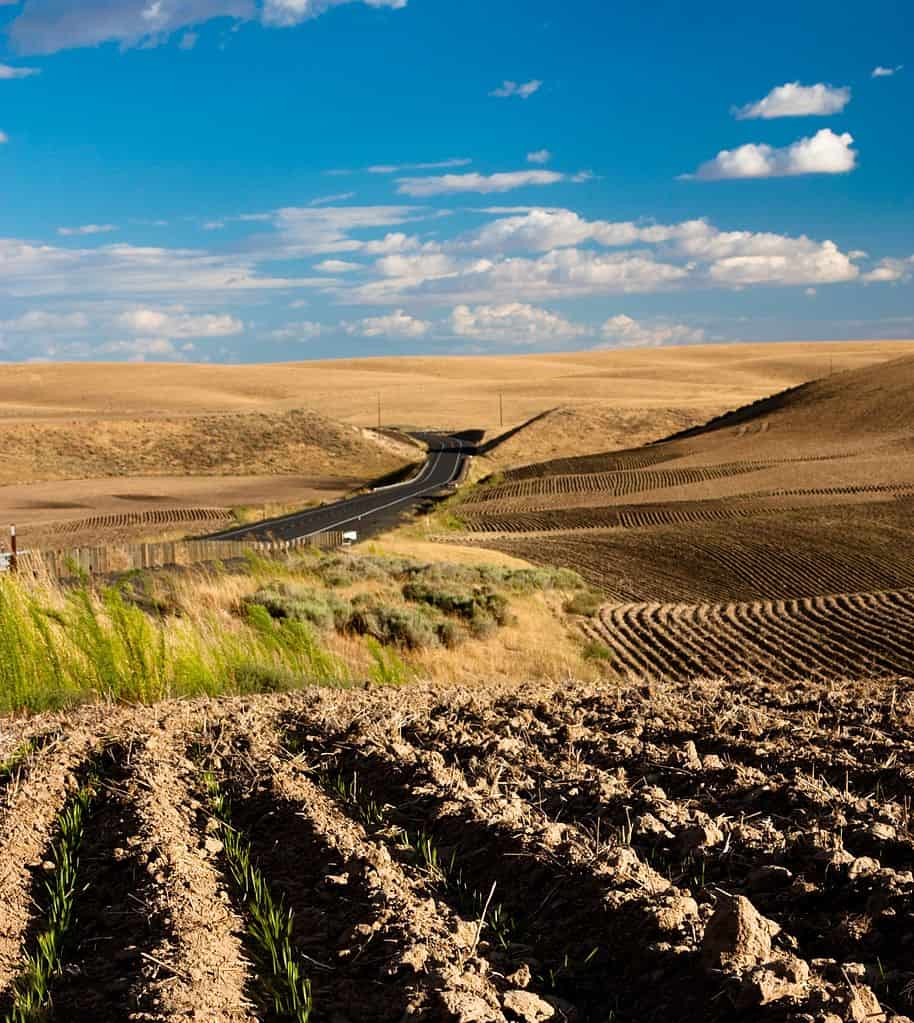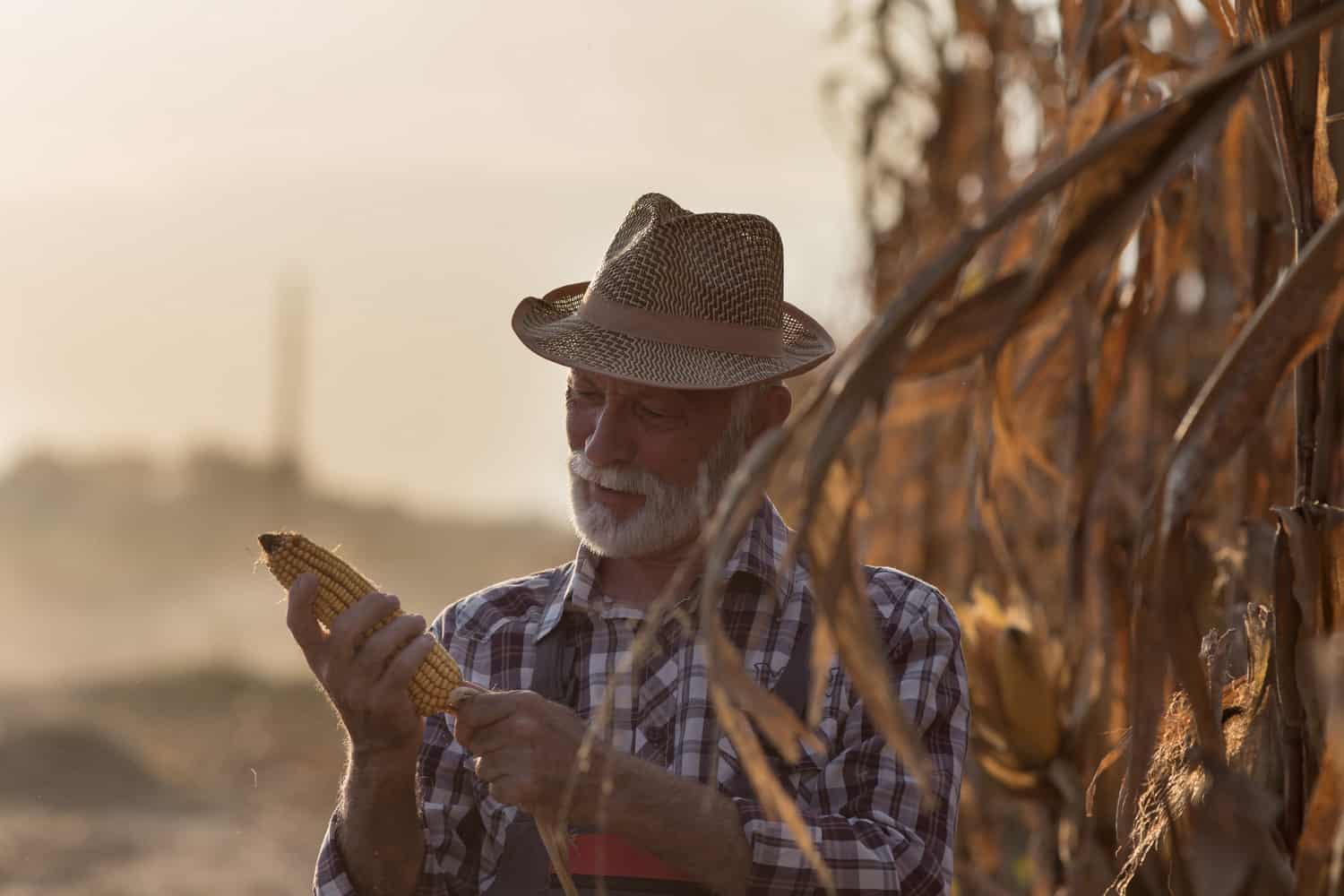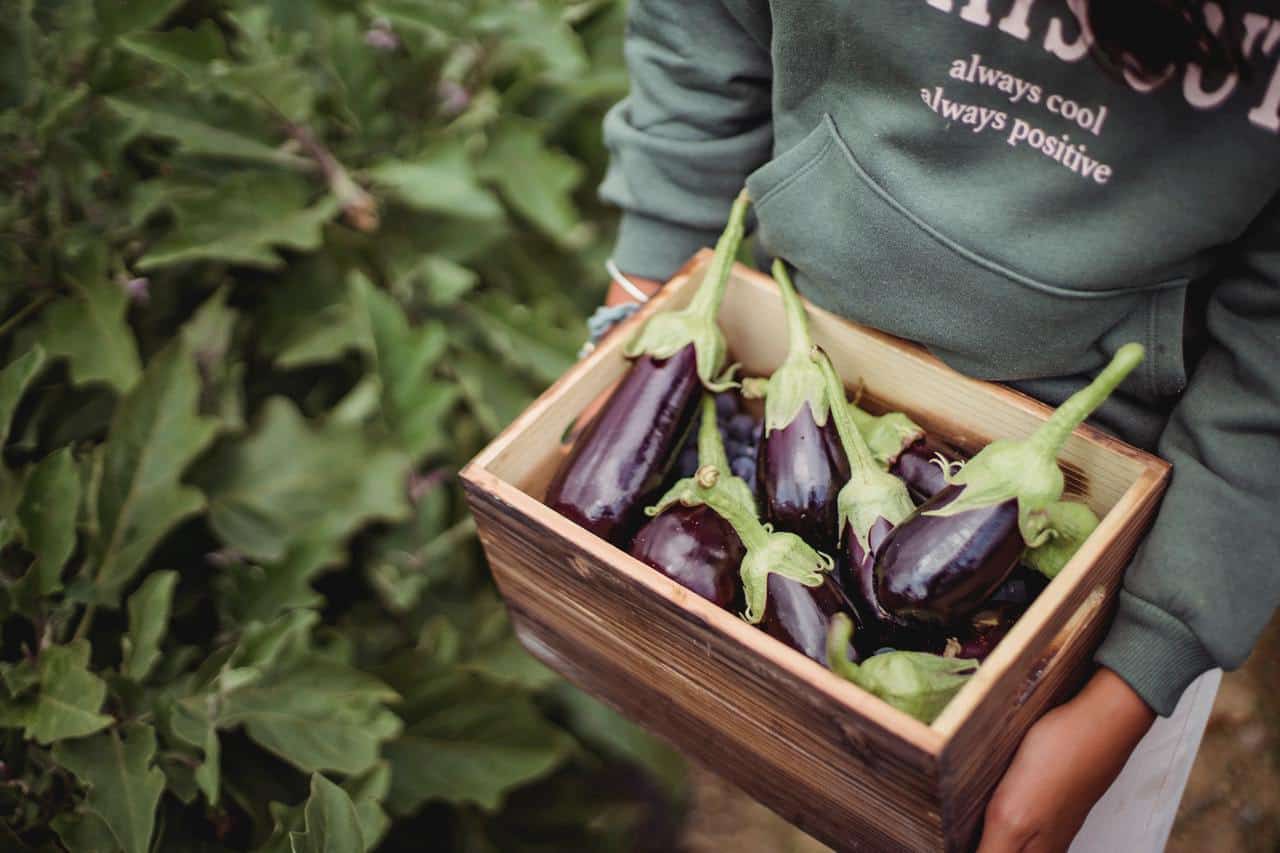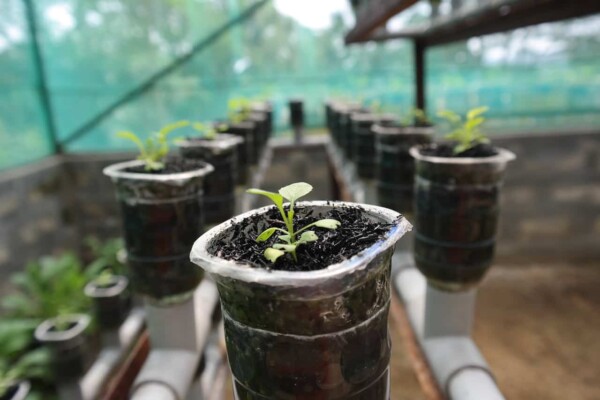Global population growth, increasing consumption of food, and limited water and energy resources are just a few of the issues that affect humanity today. Agriculture is vital for economic stability and helps to eliminate poverty, modernize society, and get faster and more long-term development.
That’s why farmers and scientists from all over the world are working together to improve technologies for growing food with minimal or no irrigation. An arid region’s financial stability depends on the success of dryland agriculture. Without specific agricultural techniques, vast swaths of land would remain barren and worthless.
Even though dry agriculture requires significant financial investment and labor, without it people living in arid climates ought to be entirely subordinate to outside sources of food. Moreover, as global warming heats our planet, the need to farm with less water becomes more urgent.
As the world endures a historic drought, lawmakers, researchers, and farmers are bracing for future effects on the food supply chain. Many arable lands today may become completely dependant on dryland cultivation methods to support agricultural production.
What is Dry Farming?

Dry agriculture is a term that refers to farming techniques used in semi-arid and arid regions with an annual precipitation average of fewer than 20 inches (51 cm). It is a method to moisturize crops that eschews artificial irrigation, in favor of relying on remnant water in the soil from the rainy season.
Simply put, dryland cultivation is practiced in areas where the prospective rate of evaporation outpaces precipitation. For this reason, dry farming may be practiced in areas with high average rainfall throughout the wet season, most frequently in the winter. The process is designed to collect winter rainwater in the soil before it flows into streams and out to sea.
The belief is that sufficient moisture remains to maintain crops throughout the growth period and that plant roots pierce deeply into the soil in search of submerged water. It entails the preservation of soil conditions that favor humidity conservation, such as plowing and drought-resistant varieties of crops.
In other words, not only how to farm must be taken into account, but also how much to farm and for certain, if to farm. Yes, it takes considerable foresight and preparation to farm efficaciously in this manner, but you can grow fruits and vegetables while massively reducing your irrigation requirements.
History of Dry Farming

For a long time, farmers have learned to deal with twists in the weather. Therefore, dry agriculture is not recent. It has been done in Mediterranean areas for a long time, including Italy, Spain, and France.
As an example, there are regions in Europe where it is still prohibited to irrigate vineyards, during the growing period, because of the possibility that it might influence the grapes’ flavor. Although reduced water implies fairly small grapes, it ensures a more intense taste and an increased skin-to-fruit percentage.
Nevertheless, it is believed that dry farming began in the 19th century as a means of increasing the yield of specific crops, especially wheat. Through the modern period, dry agriculture became popular, thanks in part to Hardy Webster Campbell. However, excessive use of it had a devastating impact, also known as the Dust Bowl.
During that time, inexperienced dry farmers used up a lot of the soil surface without letting it grow back. Because of the rapid mechanization of agriculture and the widespread use of tractors and grain harvesters, green pastures were quickly turned into dry fields. The result? Colossal dust storms and an economic catastrophe. April 14, 1935, was dubbed “Black Sunday” due to dense dark clouds that obscured the sun.
Currently, most of the land that was destroyed by dryland farming before World War II has been returned to grazing or added to the national prairie.
How Does Dry Farming Work?

Dry farming is a sustainable way to farm, drought or no drought. Any new technology should be able to make the most of a good season and lessen the negative effects of a bad one. Farmers have to use a variety of techniques to keep the soil moist, allowing rainwater to get to the roots of plants and keep them healthy.
Dry agriculture produces the best results on clay soils because this type of ground is capable of reserving and conserving significant amounts of water. If the soil lacks these characteristics, whether it is rocky or sandy, it can be adjusted by adding nutrients through composting. Once moisture is present, it has to be used efficiently.
Likewise, dry farming involves planting crops in a more dispersed manner and smaller quantities than is the case with traditional farming. To boost crop yield, a farmer should use different agronomic practices such as mixed cropping and crop rotation.
Advantages Of Dry Farming

During times of unforeseen events, preserving water is more than necessary. Not only does dry farming contribute to water conservation, but it also promotes a more sustainable relationship with nature. Additionally, because of the lack of humidity, weeds are less of a problem, as disturbing pests or fungal diseases tend to avoid dry crops. This leads to reduced production costs.
Dry agriculture methods may help broaden crop alternatives and to ensure the economic stability of arid regions or those facing severe drought. Besides, according to some nutrition advisors, dry farming produces better-tasting fruits and veggies.
Another benefit is that the energy needed to transfer and pump irrigation water is preserved. Irrigation installation and upkeep are also excluded.
Shortcomings Of Dry Agriculture

Dry farming presents its own unique and difficult set of challenges. Two significant drawbacks are the threat of crop loss and low yields. These might happen even if you use a traditional watering system, but the dry method has more problems and failures because of poor management, especially in a year when there isn’t enough rain.
Apart from that, farmers are hesitant to invest in this technology, given the lack of capital, a guaranteed price for the harvest, and sources of credit. Another consideration is the chance of soil damage caused by winds.
Most of the time, uncontrolled dry techniques have taken away more of the soil’s fertility in a single season than would have been removed over many generations of farming. There were cases when certain shallow soil types simply became unsuitable for further cultivation.
Generally speaking, the nitrates released during the preparation of a seedbed are sufficient to create as much crop as the humidity is capable of maturing. But in dry years, too many nitrates can be devastating because they make plants grow too quickly for the amount of water they have.
Dry Farming Techniques. How to Conserve Soil Moisture?

In order to grow crops, dry farmers use a variety of techniques to ensure that the soil remains moist and nutrient-rich.
Several methods that endorse dry agriculture should include the following:
1. Bunding
Bunds are one of the most frequently used techniques of rainfall cultivation in agriculture. Their primary objective is to slow and filter runoff water from precipitation, thereby reducing topsoil erosion. As the flow rate is slowed, a greater volume of water can easily penetrate the soil, resulting in higher soil moisture.
2. Summer fallow
Summer fallow is regarded as a technique in which no crop is grown during a period when it would normally be developed. To put it another way, summer fallow is a means of soaking up water from the soil surface. This method is almost necessary for some dryland areas since there is obviously not enough rain during the crop growth period to supply a sufficient amount of moisture.
The primary goal of fallowing is to ensure adequate moisture for the most important post-rainy season crops. There must be soft soil that can absorb rain, as well as mulch, kept wet to keep it from drying out.
3. Reducing transpiration
Transpiration is how all growing plants harvest moisture from the ground and evaporate it through their stems and leaves. While this process undoubtedly aids the plant in dealing with heat stress, excessive water failure during the planting season will have a detrimental effect on your crop.
An antitranspirant is a substance that is applied to plant surfaces in order to minimize evaporation and water wastage. It retains soil water in the root system, enhancing growth by balancing moisture losses.
4. Prevent the formation of a soil’s crust
Probably the biggest problem with water uptake is that soils tend to form puddles on the outside and build up a protective layer or crust that stops water from getting in. Raindrop’s pummeling action usually breaks up clods and dissipates soil.

5. Mulches
Mulches decrease soil water loss, preserve moisture, regulate ground temperature, improve the soil’s nutrient status, inhibit the growth of weeds, reduce erosion damage, enhance microbial activity, and eliminate fertilizers, pesticides, and heavy metal residues. Furthermore, mulches may provide agriculture with financial, stylistic, and ecological advantages.
Mulches can be organic or synthetic Vegetable and animal waste combine to form organic mulch.
6. Lower planting density
Due to the scarcity of moisture, broader row spacing and lower seeding rates are needed. Crops planted in lines allow for dirt mulching, hence conserving more moisture. The resulting decreased crop offers more water and mineral nutrients per plant, making it less likely for the plant to grow before the available resources are depleted.
7. Plowing and tillage practices
Tillage is used to manage weed growth, pests, and diseases, to incorporate nutrients and plant residues, to conserve soil and water, to enhance physical soil condition by removing condensed plow plans or other thick layers, and to prepare a seedbed.
While tillage has some advantages, it also has several negative effects, including the tendency to degrade soil structure, entomb surface residues, and increase water loss from the sown zone. The latter issue is especially vital in dryland agriculture.
Deep plowing in the rain is highly relevant for dry agriculture. It improves soil permeability and total porosity. Moreover, in gently sloped soils, where rainwater tends to flow easily to the surface before infiltrating the soil, this method can be extremely beneficial.
The other process that plays a major part in dry farming is weeding. Using this technique, weeds are eradicated, preventing them from competing with cultivated species for water absorption.

8. Crop rotation
When genetically similar crops are grown successively, particular nutrients and soil minerals are drained quicker than they can be replenished. This judicious decrease rapidly “wears out” the soil.
Crop rotation is an agricultural practice that involves growing crops in succession on the same paddock. Fewer weeds, pests, and plant diseases, as well as changes in soil chemical, biological, and physical properties, are all positive outcomes.
9. Crop and variety selection
Variety selection is critical. Dry farming species should have:
- short-stemmed plants with a narrow leaf
- pronounced deep roots
- rapid-maturing crops that might develop in advance of the hottest and driest periods
10. Strip cropping
As part of a crop rotation, several cultures are grown in strips and alternated. This is known as “strip cropping.”. It is a profitable farming procedure that provides extra benefits, thus increasing field productive capacity. Properly chosen, neighboring species have a beneficial effect on one another.
Best plants for Dry Farming

Crops grown in dry farming systems must have an extreme tolerance for drought. Growers and seed suppliers frequently indicate in their plant depictions whether a crop is drought-resistant or not. This is absolutely essential for a dry farm, particularly in regions with unpredictable rainfall.
The truth is that not all crops are cultivated with drought resistance in mind. Numerous varieties are raised for high harvests under irrigation. Thus, the genetic inheritance of some conventional crops may be ineffective on a farm without irrigated agriculture. Plants with shallow roots will be more difficult to manage if they are grown on a dry farm, but it is not impossible.
Nonetheless, here are a few crops that thrive in periods of low rainfall.
Wine grapes

Dry farming is as old in the tooth as grapevine agriculture and remains a defining feature of old-style traditional viticulture. While some wine grape farmers prefer dry farming their grapes, others are forced to do so due to a lack of irrigation water or the inability to utilize water during crop growth.
Unlike most parts of Europe, California’s wine-growing regions encounter drought during the warmer months, which makes dry farming particularly difficult. However, the wines are exquisite. Zinfandel is the most frequently dry-farmed variety.
Okras

Famous for its high temperatures and drought resistance, Okra is an awesome choice for dry farming.
Although it can withstand a considerable amount of water stress, compost will undoubtedly help it prosper during the dry season.
Tomatoes

Dry-grown tomatoes can be a viable alternative for crop farmers in areas with less favorable climate and soil conditions, according to the USDA. Due to a lack of water, the plant is forced to push its roots down into the soil in search of water, concentrating its efforts on fruit production.
The resulting tomatoes are typically smaller and yield less, but have an incredible amount of flavor and a thick, strong texture. No matter what, it’s important to resist the temptation to water your tomatoes, as uneven watering can result in an illness known as blossom end decomposition.
Eggplant

Like okra and tomatoes, eggplants are intended for the warmer months. They are delicate at first and should be protected from infestations such as flea beetles. Likewise, they require a fair level of moisture to define. Purchase drought-tolerant varieties and keep them mulched to taste eggplant throughout the summer.
Garlic

Garlic may be the simplest of all dry-farmed plants because it thrives during winter, which is typically the wettest time. Frequently, garlic can be pulled out before the dry weather emerges if it is grown in the fall and harvested in the late spring.
For 3-6 weeks or even more, hold your garlic to dry, using fans if the humidity is high. Set them away from the garlic; the goal is to increase airflow, not to blow the bulbs and cause them to wither and die.
Potatoes
Potato farming has historically been concentrated in areas with copious rainfall. Farmers in drylands avoided growing potato crops out of fear that they would underperform. However, when grown properly, they can prosper in arid areas as well.
When it comes to potatoes in dry farming, the best thing is that they are usually sown early enough in the year to benefit from spring rainwater. Take into account that weeds will consume water; thus, if possible, use compost.
Sweet potatoes
Sweet potatoes can withstand extreme heat. Nevertheless, it is important to plant them in moist soil. As long as this happens, these plants will grow rapidly and establish their own cover to maintain moisture.
Peppers
As long as you keep your mulching level high, you’ll be able to grow delicious peppers. This is because peppers can grow in dry conditions, especially in the summer.
When to Plant?

Last but not least, take care with your timing. When it comes to dry farming, determining the most opportune moment to plant seeds is absolutely essential.
If you plant something too close to the deadline, it may not receive enough moisture and become weak and disease-prone. Take into account that most crops depend on water to develop strong roots in order to thrive during the hot, dry summer months.
If dry farming seems daunting, have no fear. Keep your cool. You are not required to employ all of these techniques on your initial attempt. But, as we have already stated, you should come up with a plan.
Decide when you will plant crops, which plants you want to grow and which method you are willing to try. If something does not succeed, avoid becoming discouraged. You’ll figure it out sooner or later.












